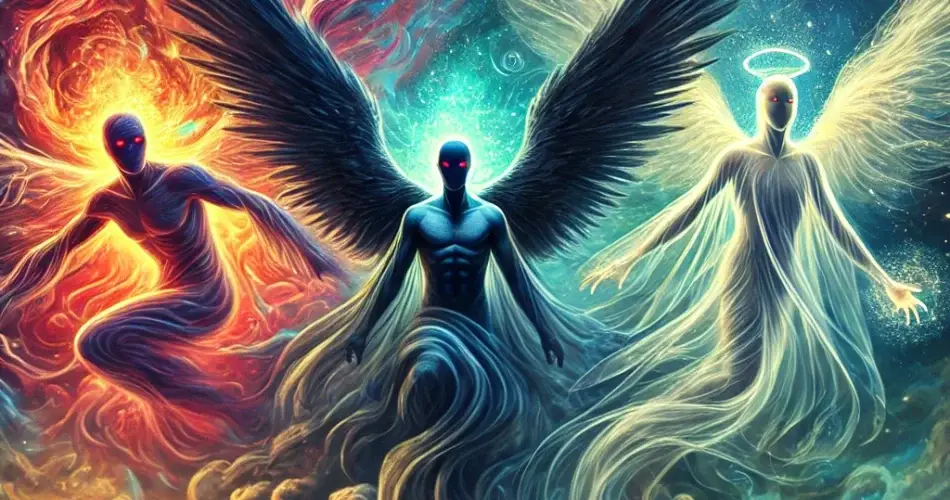The Oneiroi in Greek mythology are dark-winged spirits that carry dreams every night to both men and gods. They are lesser-known deities that hold a significant place in Greek mythology.
They are the Greek personification of dreams, and they represent the various types of dreams experienced by mortals.
Who are the Oneiroi
In ancient Greek, the term “Oneiroi” (singular: “Oneiros”) literally translates to “dreams.” The Oneiroi are depicted as dark-winged spirits who reside in a cave near the western edge of the world, near the entrance to the Underworld.
According to Greek mythology, the Oneiroi are sons of Nyx, the primordial goddess of the night, and Erebus, the god of darkness.
As sons of Nyx, the Oneiroi are brothers of Moirai, Hypnos, and Thanatos, the personifications of Fates, Sleep, and Death, respectively. In some Greek records, these personifications are described as Oneiroi.
How did the Oneiroi Operate
Every night, the Oneiroi depart from their caves like a flock of bats leaving the nest. As these creatures depart, they can pass through one of two gates.
The first gate was made of horn. Oneiroi that passed through this gate would deliver truthful and helpful dreams to mortals. The second gate was made from Ivory, and Oneiroi that pass through this gate are believed to bring only false and meaningless dreams to mortals.
The Oneiroi were useful messengers of the Greek gods and were frequently used to pass important messages to mortals in dreams.
An example is seen in Homer’s Iliad. Zeus sends a Oneiroi to deliver a false dream to Agamemnon, the leader of the Greek forces during the Trojan War and instructs him to take his men to war. Zeus used this trick to manipulate the course of events.
Read also: Tragic love story of Ampelos and Dionysus
The Oneiroi also represent the duality of dreams — their ability to bring both comfort and fear. They can provide solace, guidance, and connection to the divine. At the same time, they can also evoke fear, anxiety, and the darker aspects of the subconscious.
This dual nature of the Oneirol provides a logical explanation for the human experience, where dreams can be a source of inspiration and terror.
Types of Oneiroi
Although the Greek myths say that there are thousands of Oneiroi, three of these play special roles. These three are Morpheus, Phobetor (also known as Icelus), and Phantasos, each representing different types of dreams:
Morpheus
The most famous of the Oneiroi, Morpheus, is the god of dreams who specializes in shaping and forming human figures in dreams. He is often depicted as a winged figure who can take on any human form, making him the master of dreams involving other people.
Phobetor (Icelus)
Known as the bringer of nightmares, Phobetor is associated with frightening and monstrous dreams. His name means “fright” or “fear,” reflecting his role in producing dreams filled with terror and dread.
Phantasos
Phantasos is the god of fantastical dreams. He is responsible for dreams that feature inanimate objects and abstract scenes. His domain includes bizarre and surreal dreams involving landscapes, objects, and non-human forms.
Symbolism and Cultural Significance
The Oneiroi symbolize the mysteries of the subconscious mind and the blurred line between reality and the imaginary. Dreams have always fascinated humans, and the Greeks were no exception.
They saw dreams as powerful phenomena that could reveal truths about the future, offer insight into the divine will, and provide personal reflection and understanding. As personifications of these experiences, the Oneiroi were central to this understanding of dreams.
Their connection to Nyx, the goddess of the night, further emphasizes the enigmatic and often ominous nature of dreams. The Oneiroi emerge from this darkness, suggesting that dreams are born from the unknown depths of the subconscious mind.
Depictions in Ancient Art and Literature
The Oneiroi, particularly Morpheus, have been depicted in various forms of ancient Greek art and literature. Morpheus, for example, is often portrayed as a winged figure or a young man with a calm and serene expression, symbolizing the peaceful aspect of dreams. In contrast, Phobetor might be depicted with more frightening and monstrous features, reflecting his association with nightmares.
In literature, the Oneiroi appear in works by several ancient authors. Homer’s epics, “The Iliad” and “The Odyssey,” make use of dreams as significant narrative devices.
In Ovid’s “Metamorphoses,” Morpheus is described in detail as the most talented of the Oneiroi, skilled in mimicking the voices and appearances of humans, further cementing his role as a master of dreams involving people.
